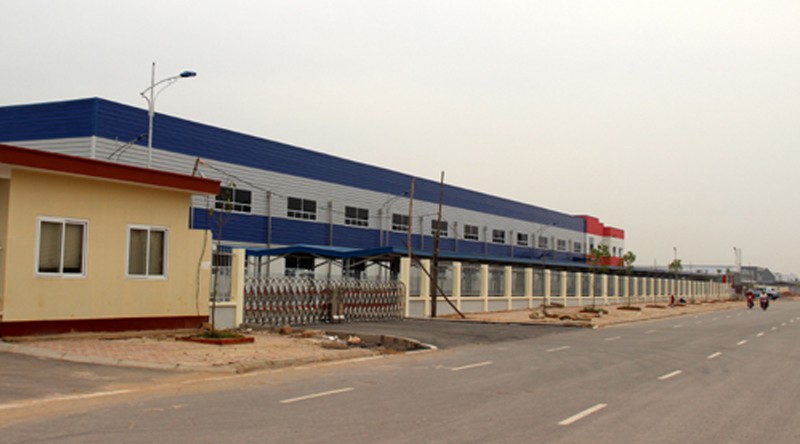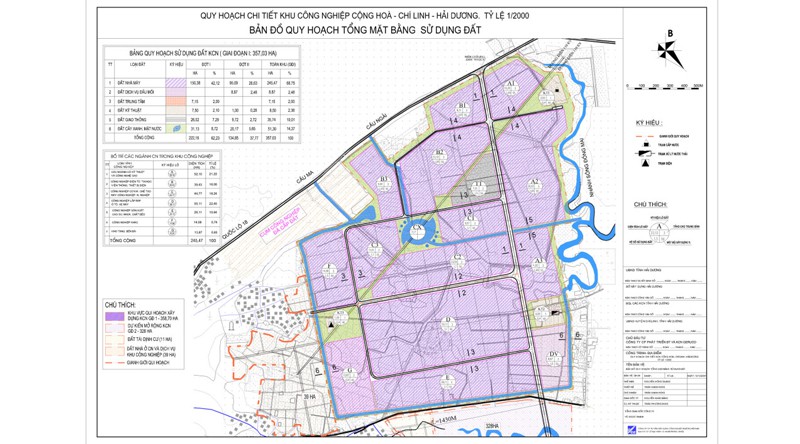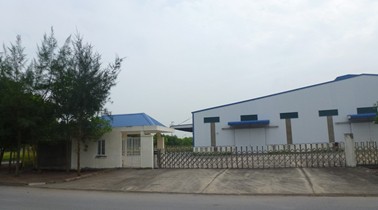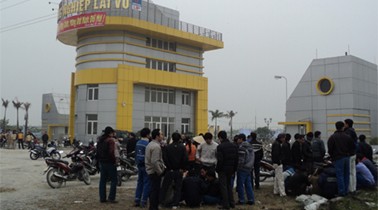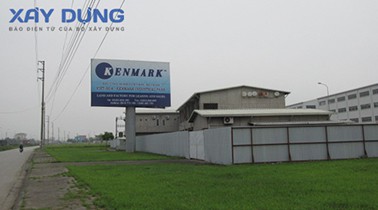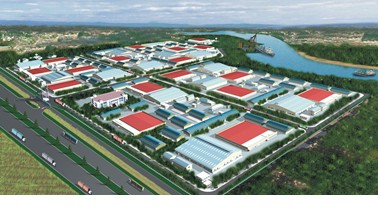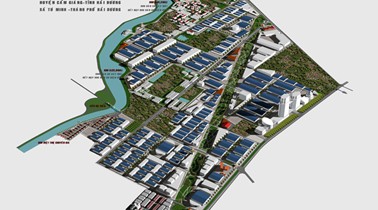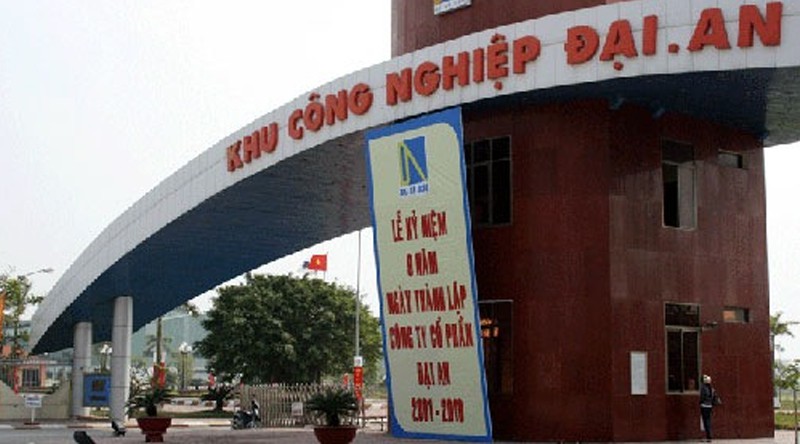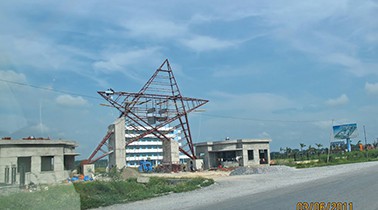Hai Duong Province
1662 km2
Red River Delta
11
13710
2,463,890 people (2016)
| Total Area | 1662km2 |
| Agricultural Production Land | 844 km2 |
| Forestry Land | 109 km2 |
| Specially Used Land | 308 km2 |
| Residential Land | 157 km2 |
| Borders |
Northwest border province of Bac Ninh, Bac Giang province in northern, northeastern Quang Ninh province, east of Hai Phong, Thai Binh Province to the south and west by the provinces of Hung Yen. |
|
Climate
Tropical monsoon, hot and humid, 4 distinct seasons. Average annual temperature: 230C. Average annual precipitation: 1,500-1,700mm. Average air humidity: 78-87% |
|
|
Natural Resources
Land resources: Two soil types can be found: Mountain ous soil covers the northern part, Chi Linh, Kim Mon districts, taking 11% of natural land space. It’s of low fertility, thin top layer, humus deficient, mostly suitable to wood trees, fruit crops (litchi, pineapple), industrial crops (ground nut, tea) planting… The plain soil type makes up 89% of the land, consisting mainly of fluvial alluvium deposited by Thai Binh River. It’s highly fertile, suitable for high-yield plant crops in intensive culture. Water resources: The province is endowed with a fairly dense waterways network consisting of Thai Binh and Luoc Rivers, An Kim Hai, Bac Hung affluent, which makes alluvial deposits, depositing alluvium to fields, supplies water for economic production, and concurrently serves as communication channels enabling intra-provincial goods transport and traffic between Hai Duong and other provinces of the region. Surface water, fairly abundant, comes from rivers, rivulets of every size, lakes, swamps, canals and ditches of wide extent. Underground water: there is a sizeable reserve. Drilled well scan supply 30-50m3 in 24 hours. Well water mainly comes from pleistocene pockets; its Cl content is under 200mg per liter. Common tapping layers locate at an average depth of 40-120m. Underground water can be judiciously tapped for household use in the northern part of the province… Moreover, underground water at the depth of 250-350m has been found in many other places of the province. It has good quality, high reserves, high potential for steady supply to economic production and people’s home use. Mineral resources: Though not abundant, some minerals hold large deposits, good quality and high economic value, serving as raw materials for industrial development. Worth mentioning are limestone, kaolin, heat resistant clay. Hai Duong also avails stone, sand, pebble, coal, lignite, clay, bauxite, mercury and a lot of others, for construction materials fabrication. |
|
| GDP Growth Rate | 7.1% (2014) |
| Population | 2,463,890 people (2016) |
| Population Density | 1,072 person/km2 (2015) |
| Population By Sex | 95.9 males per 100 females |
6.70% (2015) |
|
| Immigration Rate | 1.40% |
| Labor Force At 15 Years Of Age And Above | 57.00% (2015) |
| Unemployment Rate | 4% (2015) |
|
Major Industries
production of building materials, such as limestone, clay, kaolin, ore - Nazi. |
|
| Annual Average Capital Of Enterprises | 156,522 billion dongs (2014) |
| Net Turnover | 173,060 billion dongs ( 2014 ) |
| Profit Before Taxes | 7,232 billion dongs ( 2014 ) |
| Profit Ratio | 4.10% (2014) |
| PCI | 58.37 (2015) - Rank: 34 |
Total Area: 183.96m2
Occupancy Rate: 0%
Address: Vsip Hai Duong Industrial Park, Cẩm Điền, Cẩm Giàng District, Hai Duong, Vietnam
Total Area: 357.03m2
Occupancy Rate: 0%
Address: Cong Hoa, Chi Linh, Hai Duong
Total Area: 132.4m2
Occupancy Rate: 0%
Address: Lai Cach Industrial Park, Lai Cach Town, Cam Giang District, Viet Nam
Total Area: 46.6m2
Occupancy Rate: 0%
Address: Hai Duong City, Hai Duong Province, Viet Nam
Total Area: 198.06m2
Occupancy Rate: 75.15%
Address: Tan Truong Industrial Zone, Cam Giang, Hai Duong, Viet Nam
Total Area: 87m2
Occupancy Rate: 0%
Address: Phuc Dien, Cam Giang, Hai Duong, Vietnam
Total Area: 433m2
Occupancy Rate: 0%
Address: Hai Duong City, Hai Duong, Viet Nam
Total Area: 135m2
Occupancy Rate: 0%
Address: Hai Duong City, Hai Duong, Viet Nam
Total Area: 62.42m2
Occupancy Rate: 0%
Address: Nam Sach Industrial Park, Ai Quoc and Nam Dong Commune, Nam Sach District, Viet Nam
|
Transportation
Consisting of roadways, waterways, railways in rational distribution and convenient exchange with other provinces. Roadways: The network extends to 9,205.96km long, of which 2,200km are automobile roads at density of 0.7km/ km2, the highest density nationwide, the highest in the Red River Delta and of neighboring provinces. Six national roads, No 5, 18,183.., cross over Hai Duong in a length of 115.6km, proportionally taking 5.34% of the total auto highways of the province. These national roads help to develop local hubs, currently connecting the province to polar development sites of the country. Provincial roads 2, district road, urban center roads, rural roads, bridges, drains, ferry landings, though adequate, need improvement, upgrading to meet development demand. Rural communication is a case in point. Railways: Rail lines trespassing Hai Duong over a distance of 70km, namely the Hanoi-Hai Phong line, over 44km, Kep-Bai Chay line,10km, Ben Tam-Co Thanh (Chi Linh) line,16km (mainly serving Pha Lai Thermo power Plant). Rail lines facilitate traffic between Hai Duong and other provinces as well as export exchanges via Hai Phong Seaport. Waterways: Large rivers run through the province forming a propitious waterway network linking the province with Northern provinces and national seaports. There are 18 fluvial routes of some 419km long, of which 393.5km is navigable for transport purpose. There are, in addition, hundreds of other fluvial routes amenable to transport navigation. There are many ports, 29 landing points for cargo haul along rivers. Major ports are Hoang Thach Cement Port (annual cargo handling capacity: 2 million tons), Cong Cau Port (280,000 tons/year). |
|
|
Telecommunications
Technological advances have been applied to upgrading and extension of networks. Current services (cable transmission,, internal provincial cables, mobile nets, Mega VNN ) are improving. Direct, rapid contact within the country and with the outside world is available. |
|
|
Water Supply
Proper investment concern has been given to new construction and improvement of water supply. Several water works have been regrouped to meet economic production and urban home use demands. Small scale supply to households by wells, collection tanks in rural areas have been practiced. |
|
|
Electric Supply
Pha Lai Thermo-power Plants. Pha Lai I 4x110 MW, Pha Lai II 2x300 MW. Transmission lines 220 &110kV from Pha Lai connect to the Northern grid and feed directly into six 110kV stations. There are also other 110kV transmission lines undergoing construction. Hai Duong power grid now avails tension lines 110, 35, 22, 10, 6kV and distribution stations scattered over the territory assuring technical standard supply to economic production and domestic home use. |
| People's Committee | 1 Duc Minh Street, Thanh Binh Ward, Hai Duong City, Hai Duong Province. |
| Relevant Government Departments |
|
| Province | Hai Duong Province |
| Headquarter of People's Committee | 1 Duc Minh, Thanh Binh Ward, Hai Duong City, Hai Duong Province. |
| Official Provincial (or City) Website | www.haiduong.gov.vn |

 Geography
Geography
 Economy
Economy
 Connection
Connection
 Infrastructure
Infrastructure
 Government
Government
 Social - Culture
Social - Culture
